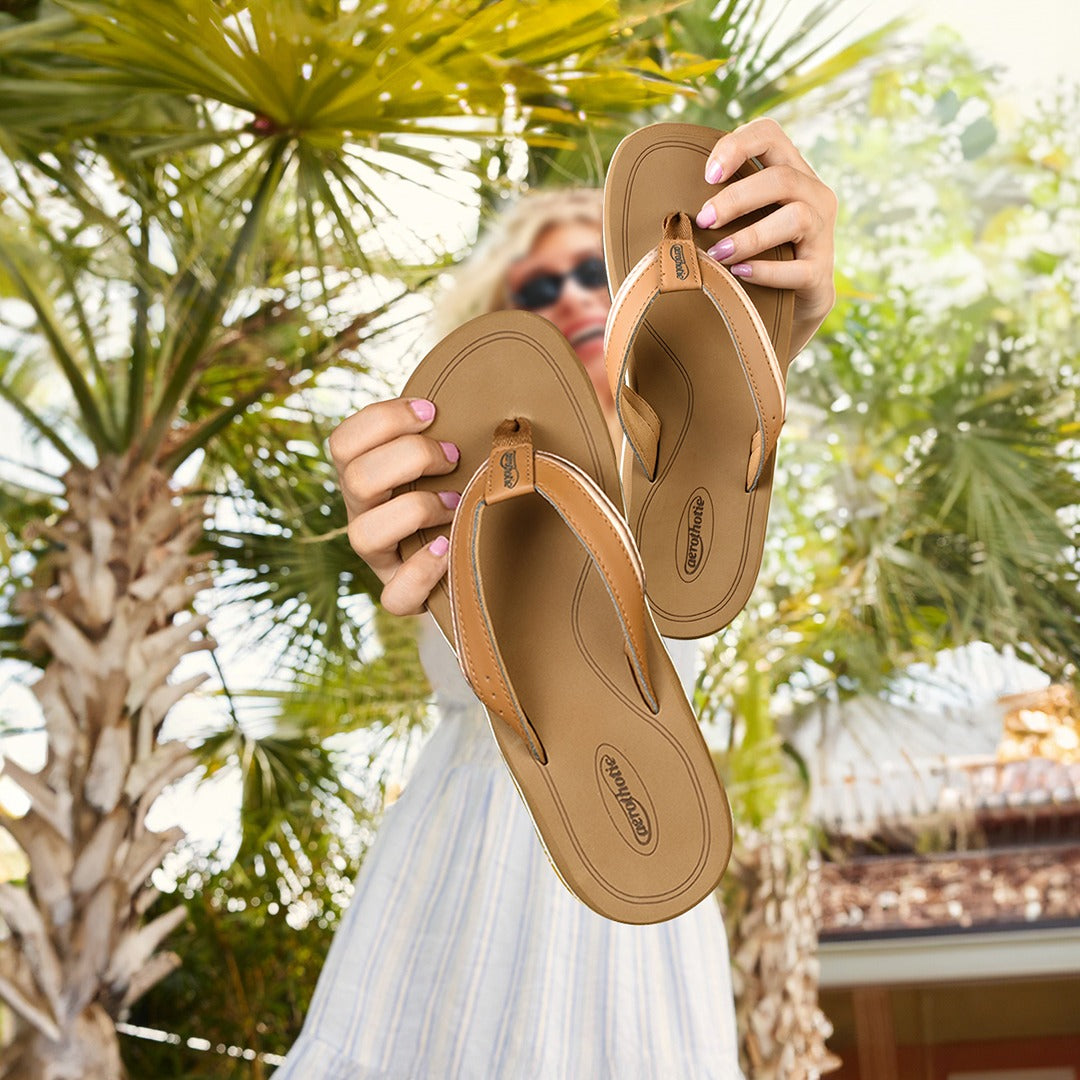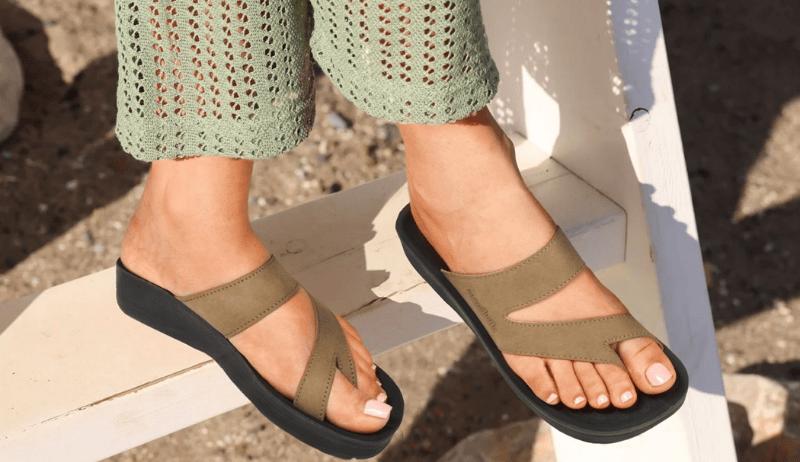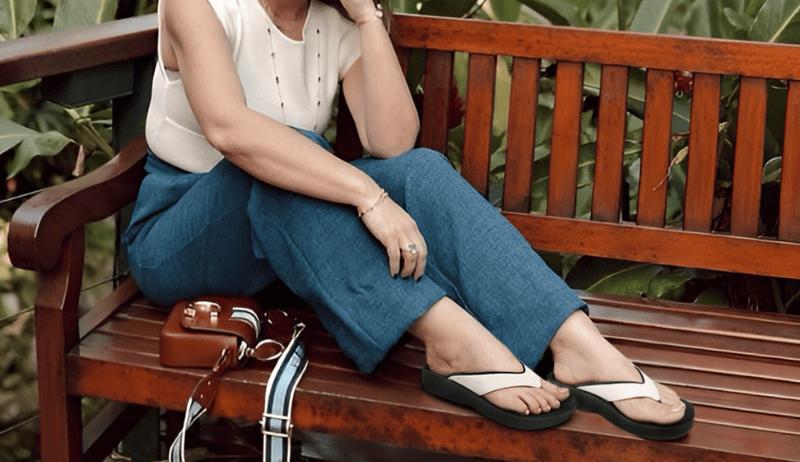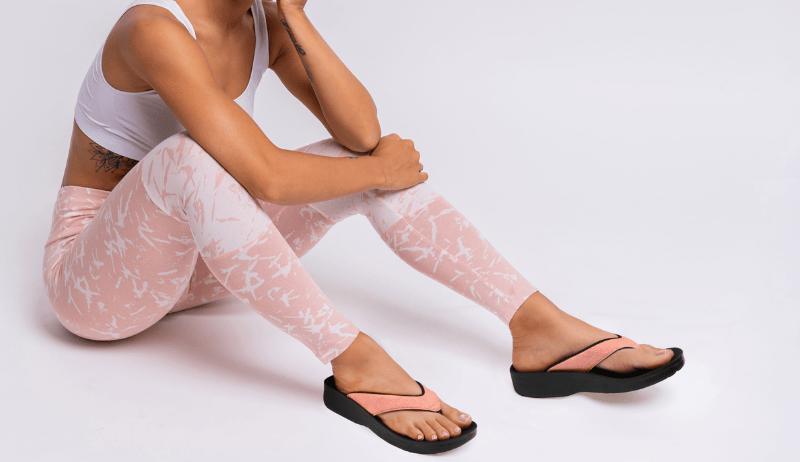How a Podiatrist Diagnoses Common Foot Conditions and Recommends Footwear?
Foot discomfort is one of the most overlooked health concerns. Whether facing sharp heel pain or limited movement, a professional checkup is essential. That is why you should always consider a podiatrist as early as possible once you observe any discomfort. Here, you may read about different ways an expert podiatrist may help assess your problem and recommend ways to relieve the issue.
Introduction
Podiatrists are Podiatric medicine doctors with special expertise in evaluating and treating various foot conditions. Through their professional diagnosis, they check the patient’s condition, point out the possible causes of the problem, and employ all the possible measures to eliminate the root cause and make the lower legs and feet healthy.
Problems with foot health can impact the whole body's functions and may occur at any age for multiple reasons. Age, genetic factors, and intense physical activity are primary causes that can worsen due to poor footwear choices. That’s where a thorough examination by a suitable podiatrist is crucial.
A podiatrist diagnoses the situation and recommends foot care tips to help eliminate the root cause and symptoms. One crucial aspect of this type of foot care involves using orthopedic footwear to relieve aching feet and backs.
How Does a Podiatrist Carry Out an Initial Examination?
If your feet or legs hurt while walking or after standing for some time, it is probably time to visit a podiatrist. Here is what he can do to analyze the problem initially;
Reviewing Medical History
To make a final statement about the problem, a podiatrist must know about a person’s family history, previous injuries, and medical conditions such as diabetes and arthritis. They can also ask about your daily routine, the type of footwear you prefer, and whether or not you are involved in athletic activities. Through these steps, the root cause of the problem can be better identified.
Visual Assessment
With a foot condition, you may have difficulty walking or bad posture. Also, your feet may get red, sore, or swollen, or the nails may change color. These are the common signs that a podiatrist can tell whether or not a person is having a foot problem.
What are the Standard Methods that Podiatrists Use to Diagnose Foot Conditions?
Here is a list of some common tests podiatrists may perform to assess the root cause of any muscular or joint discomfort in your feet or lower legs.
Squeeze Test
A podiatrist gently squeezes both sides of the foot or ankle, usually around the midfoot or lower leg. If there's sharp pain, it may point to a stress fracture or ligament injury. It's a quick way to check for deeper tissue or bone issues.
External Rotation Test
If you experience an aching ankle after twisting it, an external rotation test is suitable. In this test, your leg is held steady, and your foot is made to rotate. If you face unbearable pain, the possible cause may be an ankle sprain.
Knee to Wall Test
While standing, the patient bends the front knee toward a wall while keeping the heel on the ground. The podiatrist measures how close the toes can get to the wall without the heel lifting. This test checks ankle flexibility, often for people recovering from injury or stiffness.
Gait Analysis
Using treadmills and cameras, podiatrists analyze the affected person's walking style. The analysis shows foot positioning, stride, and weight distribution, which is great for diagnosing issues like flat feet, imbalance, or problems that cause leg and back pain.
Force Plate Mapping
This test involves walking or standing on a special plate that records pressure patterns. It shows how weight is distributed across the feet. Podiatrists use it to assess balance and foot loading and design custom orthotics for better support.
Apart from these standard tests, podiatrists may go for an X-ray, MRI, CT scan, or even an ultrasound to perform a detailed analysis of the patient’s joint and muscle health and alignment.
Different Types of Foot Pain
You may experience different kinds of pain and discomfort; pain in various parts of your feet may indicate other conditions. Podiatrists may identify the foot condition by seeing which part of your foot hurts. Here are the common types of pain you can experience in your feet;
Heel pain
Heel pain is a sharp aching sensation on the bottom of the foot. Usually, the affected person may take shorter steps or walk on his limp to reduce the pain. Such people may struggle to walk on hard or uneven surfaces. This condition may point to plantar fasciitis.
Ankle Pain
You may experience a sharp or burning ache around the ankle joint. It may be constant or frequent. Some other symptoms of heel pain may include considerable swelling around your heels and a stiff heel with a warm feeling. It may represent an ankle sprain or ankle twist, and the affected person has to use the other foot to walk as the foot with the ankle sprain can’t handle body weight.
Ball of the Foot Pain
The ball of the foot, just below the toes, may feel intense pain. The problem is metatarsalgia or calluses, and you may experience such a stinging pain that you may feel like walking on a pebble. A podiatrist may analyze the foot ball pain by looking closely at the person’s posture while walking. Such patients usually walk on their limbs to avoid pressure on the foot ball.
Top of the Foot Pain
This type of pain may feel like soreness, tenderness, or a dull ache across the top surface of the foot. Stress fractures, tendon irritation, or tight footwear can cause it. People often feel discomfort when flexing their feet or tying their laces. While walking, they might subconsciously lift their toes higher than usual to reduce the pressure or avoid fully bending the foot during each step.
Common Foot Conditions Podiatrists Diagnose
Podiatrists with proper footwear choices and other foot care measures can diagnose and treat almost all foot conditions. Here is a list of common foot conditions you may experience if you are feeling discomfort;
Plantar Fasciitis
Plantar fasciitis occurs when the plantar fascia in your lower foot, which connects the heel with the toes, experiences too much stress. It may be genetic or due to intense activity, prolonged standing, or a walking routine. Rubbing ice cubes, using night splinters and reconsidering footwear choices can help with this problem.
Bunions
A bunion is a bony bump in your metatarsophalangeal joint below your big toe. This condition makes your big toe bend inwards, and the bony bumps appear red and swollen with a sharp, stabbing pain.
Toenail Issues
Toenail problems, such as ingrown nails or fungal infections, often cause pain, swelling, and nail discoloration. They may result from tight shoes, improper trimming, or fungal exposure. Treatments include antifungal creams, trimming by a specialist, and wearing breathable shoes.
Callus
Calluses form when the skin tries to protect itself from repeated pressure, often from tight shoes or lots of walking. They usually look like rough, thick patches on the soles or heels. Soaking your feet, gently rubbing with a pumice stone, and using soft insoles can help ease the discomfort.
Diabetic Neuropathy
People with diabetes sometimes lose feeling in their feet due to nerve damage, known as diabetic neuropathy. This may cause tingling, burning, or numbness that makes it easy to miss minor injuries. Key ways to manage diabetic neuropathy are monitoring blood sugar levels, checking feet daily, and wearing supportive shoes.
Athlete’s Foot
Athlete’s foot is a common fungal infection that thrives in damp areas like locker rooms and sweaty shoes. It usually shows up as itchy, cracked skin between the toes. Over-the-counter antifungal sprays or creams, and keeping feet clean and dry, often clear it up quickly.
Podiatrists’ Recommendations to Treat Foot Conditions
Podiatrists may give you different suggestions based on your foot and ankle conditions. Here are some of them;
-
Avoid using traditional footwear with no proper structure or carefully designed, only keeping the trend in mind.
-
Use orthopedic footwear that supports your feet' structure and opt for an option that specifically caters to your foot condition.
-
Include gentle stretching and suitable movements to help the pain or discomfort go away with time.
Things to Look for In Podiatrist-Recommended Footwear
Here is a list of key features you should look for while choosing suitable footwear for different foot conditions;
Adjustable Fitting
Always look for shoes with adjustable straps, laces, or Velcro. This feature benefits people with swelling, wide feet, or changing foot needs. A customizable fit means better comfort and less pressure on sensitive areas.
Cushioning
Cushioned shoes are a must for anyone dealing with foot pain or spending long hours on their feet. They help absorb shock and reduce pressure on joints. If your feet often feel sore, this is one feature you shouldn’t skip.
Heel Height
You should avoid shoes that are completely flat or too high. A small heel, about an inch, offers better balance and support. It’s a small detail, but it matters for people with heel pain or back issues.
Arch Support
Good arch support is one of the most important things to look for in podiatrist-recommended shoes. It helps reduce strain on your feet, knees, and even hips. This feature can be a game-changer if you have flat feet, high arches, or plantar fasciitis.
Spacious Toe Box
Make sure the shoes you choose have a wide toe box. This gives your toes room to move and prevents pressure, rubbing, or painful conditions like bunions and corns. It’s a must-have for anyone dealing with foot deformities or sensitive toes.
Material
Go for shoes made with breathable, flexible material like mesh or soft leather. These materials keep feet dry, reduce irritation, and add overall comfort. Soft and comfortable material is beneficial for people with diabetes or skin sensitivity.
Footwear Recommendation Based on Specific Foot Problems
Podiatrists recommend sandals for women instead of using traditional footwear. Here is a list of orthopedic footwear specific to the kind of foot condition you are facing;
Orthopedic Sandals
Orthopedic sandals can be great for plantar fasciitis, aching heels, or arch discomfort, especially in summer. Look for podiatrist-recommended sandals with good arch support, soft cushioning, and adjustable straps. They are perfect for giving feet some relief while staying cool and comfortable.
Orthopedic Athletic Shoes
If you have flat feet, joint discomfort, or overpronation, orthopedic athletic shoes offer extra support during exercise or daily walks. Look for shoes with shock-absorbing soles, built-in arch support, and a spacious toe box. They help reduce pressure on the feet and protect from injury.
Orthopedic Thong Sandals
Orthopaedic thong sandals can offer a stylish yet supportive option if you need summer shoes but suffer from mild foot pain or heel sensitivity. Pick ones with contoured footbeds and cushioned soles to avoid strain and keep feet aligned, even with the open design.
Diabetic Orthopedic Shoes
People with diabetes need shoes that protect their feet from pressure and reduce the risk of sores or cuts. Diabetic orthopedic shoes have soft inner linings, extra depth, and non-binding uppers. Choose pairs with comfortable material and proper cushioning to stay safe and comfortable.
Orthotic Compatible Shoes
Orthotic-compatible shoes are a smart pick for anyone using custom orthotics or needing extra support. These shoes come with removable insoles so you can insert your own. They're great for people with plantar fasciitis, high arches, or any custom support needs.
The Bottom Line
Foot pain or discomfort is never something to take lightly. Our feet carry us through every part of the day, and even minor aches can become bigger problems if left unchecked. That’s why visiting a podiatrist regularly is a good idea, even if everything seems fine. They can catch early warning signs, help guide healing, and offer advice for each person’s unique needs. For anyone facing a foot issue, following up and giving the feet the care they need during recovery is as important as the treatment itself. Foot health is not only about the shoes we wear; instead, it is about listening to the body, acting early, and not waiting for the pain to speak louder.
Frequently Asked Questions
How can you tell if the pain is from the shoes?
If your foot pain starts after wearing specific shoes and feels better when you take them off, your shoes might be the cause. Red marks, blisters, tightness, or aching in the heels, arches, or toes are all signs. Pay attention to how your feet feel during and after wearing the shoes.
What are the best barefoot shoes?
The best barefoot shoes offer a flexible sole, a wide toe box, and just enough protection without too much cushioning. They should also allow natural foot movement and fit comfortably without squeezing your toes.
What are the podiatry foot types?
Podiatrists usually categorize feet as neutral arch, low arch, and high arch. Each type affects how weight is distributed and how the foot moves. Knowing your foot type helps choose the right shoes or orthotics for better support and comfort.
Can foot conditions affect balance or posture?
Yes, foot problems can impact your balance and posture. If the feet hurt or aren’t adequately supported, the body adjusts by changing how it stands or walks. Over time, this can lead to back, knee, or hip pain.
Are over-the-counter and custom orthotics the same?
Over-the-counter orthotics are general inserts made for standard foot issues and work well for mild discomfort. On the other hand, custom orthotics are made just for your feet based on a podiatrist’s exam.






